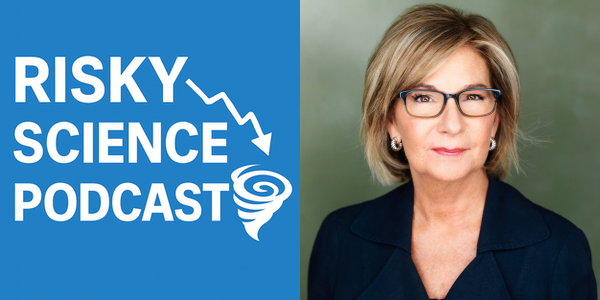- Bahamas Issues National Standard for Hurricane Models
The Bahamas has established new technical standards for hurricane risk modeling that mandate probabilistic approaches and estimate current annual average losses
- AIG Defends Reinsurance Strategy
AIG CEO Peter Zaffino defended the insurer's heavy reinsurance strategy as a competitive advantage during property market downturns.
- Risk Modeling Drives Record ILS Market Growth as Models Influence Capital Requirements
Evolving catastrophe risk models are driving record growth in the $121 billion ILS market as updated modeling requirements force insurers to purchase additional coverage, according to Aon.


As the insurance industry grapples with rising losses from "secondary perils," Risky Science Podcast spoke with Karen Clark, founder of Karen Clark & Company and pioneer of the first catastrophe model, about how modeling must evolve to meet today's climate-driven risks.
Clark, who developed the original catastrophe model decades ago and founded AIR before launching KCC, argued that traditional approaches are failing to capture the reality of higher-frequency events like severe convective storms and wildfires.
The coolest thing that's ever been done in cat modeling is what KCC scientists have set up... we ingest over 30 gigabytes of data a day from all the satellites, weather models and radar.
This real-time approach allows KCC to deliver daily loss estimates by 7 a.m., enabling insurers to test model accuracy against actual claims—something impossible with traditional hurricane and earthquake modeling.
Beyond Statistical Extrapolation
Clark emphasized that emerging perils require fundamentally different modeling approaches than the statistical extrapolation of historical data used for traditional catastrophe models. Physical modeling becomes essential when dealing with events that occur daily rather than once per decade.
The LA wildfires exemplified this challenge. While some models failed to capture such events even at thousand-year return periods, Clark noted they're actually closer to 40-50 year events that should be well-represented in model outputs.
In order for the markets to increase their confidence in the models... the modeling companies have to put their models to the test.
Climate Conditioning and Future Views
KCC's approach includes climate conditioning historical hurricanes back to 1900, asking what would happen if the 1926 Great Miami hurricane occurred under today's climate conditions. The result: approximately 12% higher average annual losses. The firm has extended this approach to create climate-conditioned views through 2030, 2040, and 2050.
New Transaction Structures
The transparency and real-time validation capabilities have enabled "modeled loss transactions"—a middle ground between pure parametric and indemnity-based contracts. These settle within months rather than years, reducing trapped capital while minimizing basis risk compared to parametric triggers.
The beauty of these modeled loss transactions is they're in between a pure parametric and a pure indemnity.
Clark noted that demand is highest for severe convective storm coverage, where supply shortages have created opportunities for alternative capital.
The Path Forward
Looking toward Monte Carlo Rendezvous, Clark sees significant opportunities for investors willing to embrace new modeling approaches for frequency perils. While traditional one-shot hurricane coverage has reached market saturation, demand for annual aggregate coverage on frequency perils continues growing.
There are credible tools today. Obviously 30-year-old technology is not going to get you there, but there are new tools that KCC is delivering to the market.
The conversation highlighted how real-time model validation and transparency—core elements missing from traditional modeling—are becoming essential for investor confidence in an era of climate-driven risk evolution.
🎙️ Get the full episode of the podcast on your favorite player here





